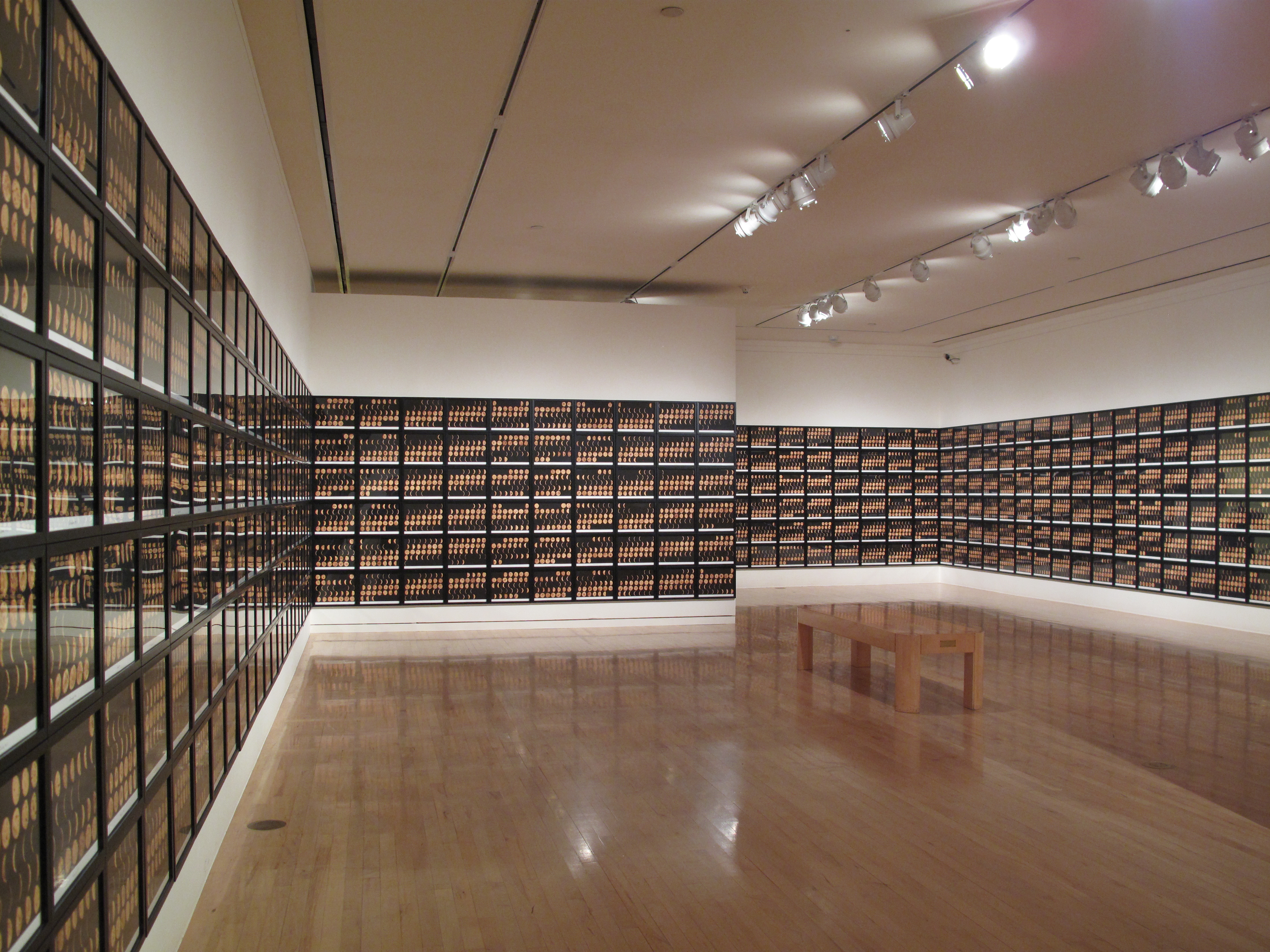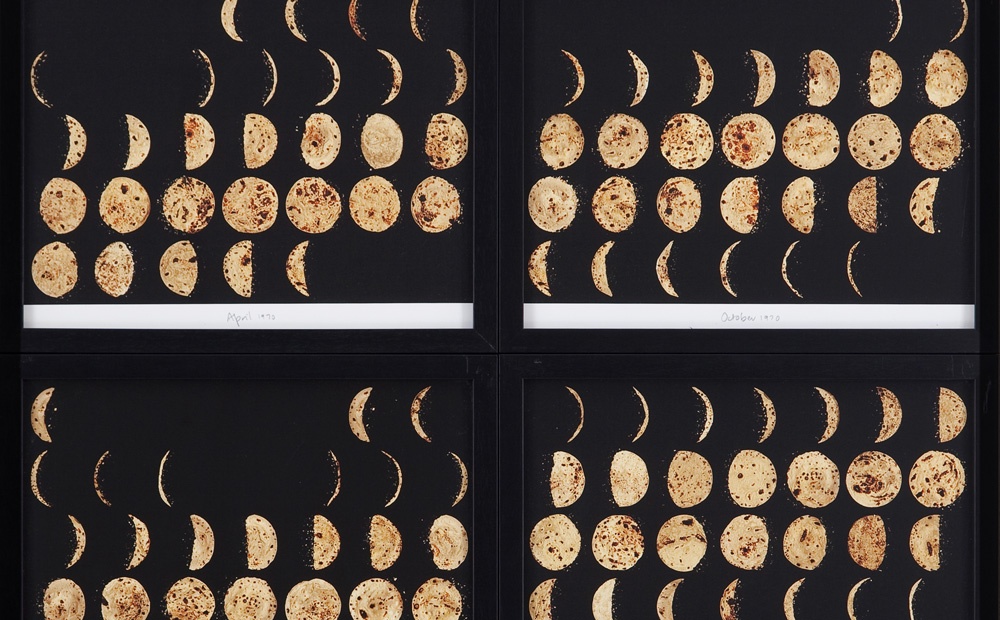Jitish Kallat. 22,000 Lunar Roti
Jitish Kallat has long looked at the sky to reflect on human biological cycles and circadian rhythms. In his expansive installation Epilogue (2010–11), Kallat honored his late father with a series of photographs that retrace his lifespan through every moon seen between the day he was born in 1936 to his death in 1998. Each frame in the labyrinthine installation features a lunar calendar illustrating the waxing and waning of approximately 22,000 moons in total—each one represented by a progressively eaten roti (flatbread). Epilogue is not only a mediation on the passing of historical and astrological time but also, as the artist explained, “fullness and emptiness, abundance and dearth”1—cycles that shape every human life.
Jitish Kallat, “Jitish Kallat on His Practice and Works,” lecture at the Museum of Contemporary Art Australia, Sydney, posted July 7, 2016, video, 59:56 minutes, available at youtube.com/watch?v=1drZuHsR3ro. ↩︎

